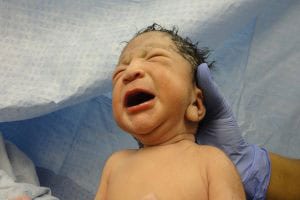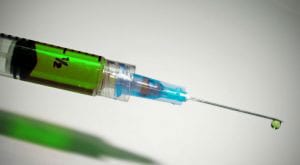Neonatal Onset Multisystem Inflammatory Disease (NOMID)
What is neonatal onset multisystem inflammatory disease?
Neonatal onset multisystem inflammatory disease (NOMID) is a systemic inflammatory condition that sees the onset of symptoms before six months of age.
NOMID is also known as chronic infantile neurologic cutaneous articular (CINCA) syndrome. It is the rarest and most severe form of cryopyrin associated periodic syndromes (CAPS). This disease is so rare that there are only about 100 reported cases.
What are the symptoms of neonatal onset multisystem inflammatory disease?
Symptoms of this condition affect the skin, central nervous system, and joints. Fever is a major effect, accompanied by rashes across the body. In terms of the central nervous system, people may experience inflammation around the brain, seizures, cognitive and learning disabilities, and sensory organ dysfunction. Inflammation of the joints is another symptom, and it is similar to the effects of juvenile idiopathic arthritis.
Other symptoms include an enlarged liver and spleen, stunted growth, abnormal facial features, a high level of white blood cells and proteins in the blood, and erythrocyte sedimentation rate.
Severity of symptoms varies widely between affected individuals. The commonality is that these symptoms usually flare-up during episodes, which are typically a daily occurence.
What causes neonatal onset multisystem inflammatory disease?
About half of NOMID cases are the result of mutations in the CIAS1/NLRP3 gene, which is responsible for the protein NALP3. The mutations result in the overactivity of this protein, which results in the inflammation that characterizes NOMID. This gene is inherited in an autosomal dominant pattern.
Those who do not have this mutation experience somatic mutations in a small number of white blood cells, which leads to the symptoms of NOMID.
How is neonatal onset multisystem inflammatory disease diagnosed?
Doctors will begin the diagnostic process by looking for characteristic symptoms and examining the family and medical history. They will confirm through tests, such as skin biopsies, eye exams, MRIs of the brain, hearing tests, x-rays, and cerebrospinal fluid tests. Genetic testing can be used, but will only diagnose those with the CIAS1/NLRP3 genetic mutation.
What are the treatments for neonatal onset multisystem inflammatory disease?
The most common treatment for NOMID is drugs that suppress inflammation, such as corticosteroids or disease-modifying antirheumatic drugs. There is also an FDA approved treatment for NOMID called Anakinra.
Where can I find out more about neonatal onset multisystem inflammatory disease?
NOMID Articles







Pfizer en proceso de licitación con el fabricante sueco de tratamiento para el NOMI




